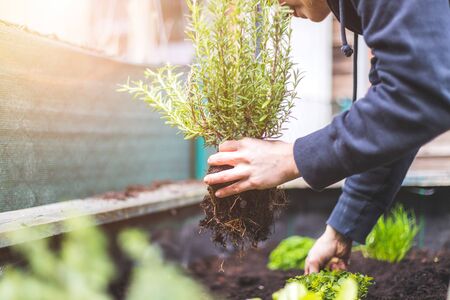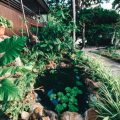Introduction to Native Plants and Low-Maintenance Landscaping
If youre dreaming of a beautiful yard that doesnt take up all your weekends, using native plants is a smart and sustainable way to go. Native plants are species that naturally occur in a specific region and have adapted to local conditions over time. This makes them ideal for low-maintenance landscaping, especially in the diverse climates found across the United States.
One of the biggest advantages of using native plants is reduced water usage. Because these plants are already suited to your areas rainfall and soil, they typically need far less irrigation than non-native species. That means you can save on water bills while also conserving a vital natural resource.
Another major benefit is minimal upkeep. Native plants are more resistant to local pests and diseases, which reduces the need for pesticides and fertilizers. They usually require less mowing, pruning, or other regular maintenance compared to traditional landscaping plants.
Plus, by choosing native plants, youre giving a big boost to your local ecosystem. These plants provide essential food and shelter for native birds, butterflies, bees, and other wildlife. In fact, incorporating native species into your yard helps maintain biodiversity and supports pollinators that are crucial for gardens and agriculture alike.
Why Choose Native Plants?
| Benefit | Description |
|---|---|
| Water Efficiency | Require little to no supplemental watering once established |
| Low Maintenance | Less mowing, pruning, and fertilizing needed |
| Pest Resistance | More resistant to local pests and diseases |
| Wildlife Support | Provide habitat and food for native birds, bees, and butterflies |
| Environmental Impact | Reduce pollution from pesticides and fertilizers; support biodiversity |
Whether youre planning a front yard makeover or just want to reduce your lawn care chores, native plants offer an eco-friendly and attractive solution. In this guide, well explore the top 20 native plants that can help you create a thriving, low-maintenance landscape no matter where you live in the U.S.
2. Why Go Native: Ecological and Practical Advantages
When it comes to creating a low-maintenance landscape, choosing native plants is one of the smartest moves you can make. Native plants are species that have naturally evolved in a specific region over thousands of years. Because of this, they’re perfectly adapted to local soil, weather patterns, and ecosystems, making them ideal for sustainable landscaping in the U.S.
Thriving in Local Climates
Native plants are built to handle your area’s unique climate conditions—whether its the dry heat of Arizona, the humidity of Florida, or the cold winters of Minnesota. This means they require less watering, fewer soil amendments, and less overall care compared to non-native species.
Benefits at a Glance:
| Advantage | How It Helps Your Landscape |
|---|---|
| Drought Tolerance | Less need for irrigation systems or frequent watering |
| Cold Hardiness | Survive harsh winters without special protection |
| Soil Adaptation | No need for intensive soil prep or fertilizers |
Natural Pest and Disease Resistance
Because theyve co-evolved with local insects and animals, native plants have built-in defenses against common pests and diseases. This reduces your need for chemical pesticides or treatments, which is not only easier on your wallet but also better for local wildlife and pollinators.
Supports Local Wildlife
Many native plants provide food and shelter for birds, bees, butterflies, and beneficial insects. By planting natives, youre helping preserve natural habitats right in your own backyard.
Examples of Native Plants That Support Pollinators:
| Plant Name | Main Pollinator Supported |
|---|---|
| Milkweed (Asclepias spp.) | Monarch Butterflies |
| Purple Coneflower (Echinacea purpurea) | Bees & Butterflies |
| Goldenrod (Solidago spp.) | Bees & Wasps |
Saves Time and Money
A landscape filled with native plants requires much less upkeep. You’ll spend less time mowing, pruning, fertilizing, and treating problems—freeing up more time to enjoy your outdoor space instead of working on it.
A Smart Choice for Sustainable Landscaping
If youre looking to create a garden thats both beautiful and easy to maintain, going native is a great place to start. These plants are natures low-maintenance solution to modern landscaping challenges across the U.S.
![]()
3. Top Native Plants for the Western U.S.
The western United States is known for its diverse climates, ranging from dry deserts to Mediterranean coastal areas. When landscaping in states like California, Arizona, and Oregon, it’s important to choose native plants that can thrive with minimal water and care. Here are some top low-maintenance native species perfect for these regions.
Why Choose Native Plants?
Native plants are adapted to the local environment, making them more resilient to drought, pests, and diseases. They often require less water, fertilizer, and pruning compared to non-native species. This makes them ideal for homeowners looking to create sustainable and easy-care landscapes.
Top Picks for Western U.S. Landscapes
| Plant Name | Type | Ideal Growing Conditions | Key Features |
|---|---|---|---|
| California Poppy (Eschscholzia californica) | Perennial/Annual Flower | Full sun, well-drained soil | Bright orange blooms, reseeds easily |
| Manzanita (Arctostaphylos spp.) | Shrub | Dry slopes, full sun to part shade | Evergreen foliage, pink winter flowers |
| Desert Marigold (Baileya multiradiata) | Perennial Flower | Sandy soil, full sun | Drought-tolerant, long blooming season |
| Cleveland Sage (Salvia clevelandii) | Shrub | Well-drained soil, full sun | Aromatic leaves, attracts pollinators |
| Oregon Grape (Mahonia aquifolium) | Shrub | Partial shade to sun, moist to dry soil | Glossy leaves, yellow flowers, edible berries |
| Brittlebush (Encelia farinosa) | Shrub | Desert conditions, full sun | Silver foliage, bright yellow blooms in spring |
Tips for Success in Western Gardens:
- Select drought-tolerant varieties: Most Western native plants thrive with little supplemental water once established.
- Avoid overwatering: Many desert and Mediterranean natives are sensitive to excess moisture.
- Add mulch: Mulching helps retain soil moisture and suppress weeds without frequent watering.
- Group by water needs: Planting similar water-requirement species together ensures efficient irrigation.
By incorporating these hardy native species into your landscape design, you can enjoy a beautiful yard that’s both environmentally friendly and easy to maintain—even in the challenging climates of the Western U.S.
4. Top Native Plants for the Eastern U.S.
The Eastern United States, including the Northeast and Southeast regions, is known for its humid summers, cold winters, and rich biodiversity. If youre looking to create a low-maintenance landscape in these temperate and humid zones, choosing native plants that naturally thrive in this environment is key. These plants not only require less water and care once established but also support local wildlife like birds, bees, and butterflies.
Why Choose Native Plants?
Native plants are adapted to local soil, climate, and pest conditions. They usually need less fertilizer, fewer pesticides, and minimal watering compared to non-native species. Plus, they help maintain the natural ecosystem.
Best Native Plants for the Eastern U.S.
Here are some top picks for perennials, shrubs, and grasses that will thrive in your Eastern garden:
| Plant Name | Type | Hardiness Zones | Key Features |
|---|---|---|---|
| Black-eyed Susan (Rudbeckia hirta) | Perennial | 3–9 | Bright yellow flowers; attracts pollinators |
| Eastern Bluestar (Amsonia tabernaemontana) | Perennial | 3–9 | Pale blue spring blooms; deer-resistant |
| Wild Bergamot (Monarda fistulosa) | Perennial | 4–9 | Aromatic foliage; attracts bees & butterflies |
| Southern Magnolia (Magnolia grandiflora) | Shrub/Tree | 6–10 | Large white blooms; evergreen foliage |
| Itea ‘Henry’s Garnet’ (Itea virginica) | Shrub | 5–9 | Summer flowers; brilliant fall color |
| Switchgrass (Panicum virgatum) | Grass | 3–9 | Drought-tolerant; great for erosion control |
| Coneflower (Echinacea purpurea) | Perennial | 3–8 | Tough and colorful; supports pollinators |
Caring Tips for Eastern Gardens:
- Use mulch to retain moisture during hot summers.
- Select plants with staggered bloom times for year-round interest.
- Avoid overwatering—many natives are drought-tolerant once established.
Add these beautiful and resilient native plants to your yard to enjoy a landscape thats both easy to care for and full of life!
5. Design Tips for a Native Plant Landscape
Creating a beautiful, low-maintenance yard with native plants doesn’t have to be complicated. With the right layout, plant combinations, and seasonal care, your landscape can thrive year-round while supporting local wildlife and conserving resources.
Smart Layout Ideas
When planning your native plant garden, consider the natural conditions of your space—like sun exposure, soil type, and moisture levels. Group plants with similar needs together to make maintenance easier and keep them healthy.
Example Layout by Sun Exposure:
| Area | Sun Requirements | Suggested Native Plants |
|---|---|---|
| Front Yard (Full Sun) | 6+ hours of direct sunlight | Purple Coneflower, Black-Eyed Susan, Butterfly Milkweed |
| Side Yard (Partial Shade) | 3–6 hours of sunlight | Wild Geranium, Blue Woodland Phlox, Solomon’s Seal |
| Backyard (Full Shade) | Less than 3 hours of sunlight | Foamflower, Virginia Bluebells, Ferns |
Companion Planting for Native Species
Mixing native plants that naturally grow well together can create healthier gardens with better pest resistance and longer bloom times. Here are a few great combinations:
Native Plant Pairings:
| Main Plant | Companions | Why They Work Together |
|---|---|---|
| Purple Coneflower (Echinacea purpurea) | Little Bluestem, Butterfly Milkweed | All attract pollinators and thrive in dry soils |
| Smooth Aster (Symphyotrichum laeve) | Goldenrod, Switchgrass | Late-season bloomers that support fall pollinators |
| Culver’s Root (Veronicastrum virginicum) | Bee Balm, Joe Pye Weed | Tall plants with overlapping bloom times for visual interest and nectar availability |
Seasonal Maintenance Tips
A big advantage of native plants is how little they need compared to non-native species. Still, a few simple seasonal tasks will keep your garden looking its best.
Maintenance by Season:
| Season | Tasks |
|---|---|
| Spring | Cut back dead stems from winter; divide clumping perennials if needed; apply mulch to control weeds. |
| Summer | Water during extended dry periods; deadhead spent flowers to encourage more blooms or prevent reseeding. |
| Fall | Leave seed heads for birds; cut back invasive species; plant new natives while soil is still warm. |
| Winter | Avoid cutting everything down—dried stems provide habitat for beneficial insects. |
Create Habitat and Beauty Together
A well-designed native plant garden is more than just pretty—it supports bees, butterflies, birds, and other local wildlife. By combining thoughtful layout design with easy-care maintenance and plant pairings that work together naturally, you’ll have a sustainable landscape that thrives year after year.


